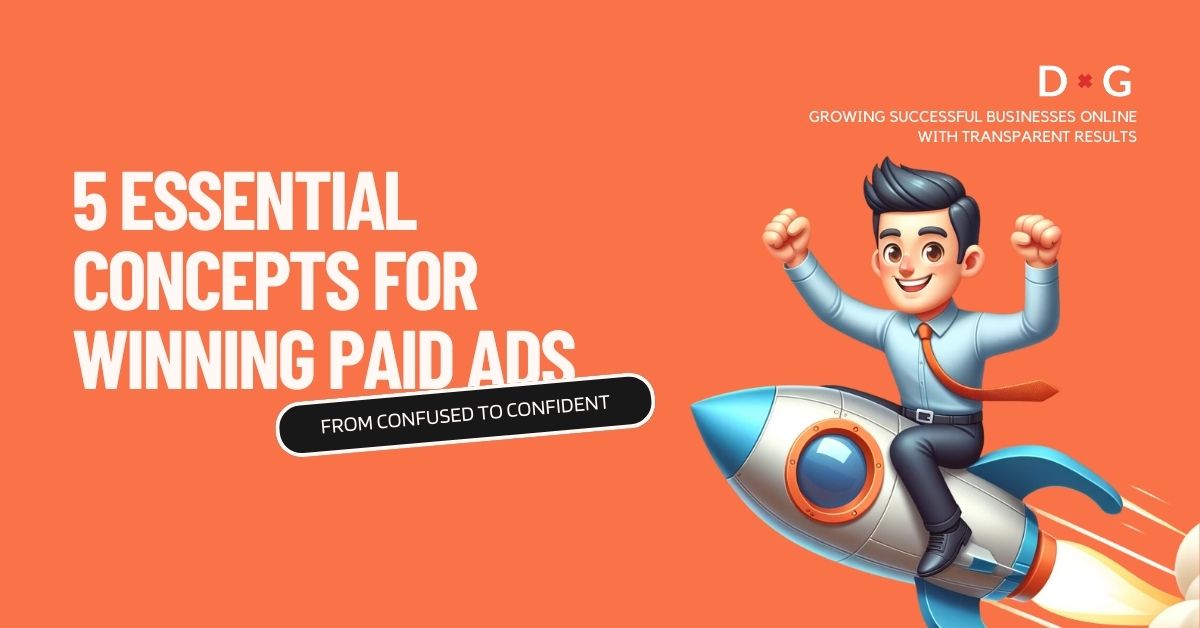
Paid ads can be powerful, but mastering them takes understanding.
Remember, paid advertising is a journey, not a destination, and achieving success isn’t a one-time effort, it’s an ongoing process with continuous improvement.
Here are the five most important concepts every marketer needs to understand before running paid ads.
1. Advertising Platforms
Different platforms cater to diverse audiences and offer unique advantages.
Understanding these nuances allows marketers to choose the most effective platform for their specific goals, ensuring better ROI and campaign effectiveness.
For example:
Google Ads is ideal for capturing demand, as it allows advertisers to target users based on their search queries.
It’s effective for businesses looking to target potential customers who are actively searching for products or services similar to theirs.
Facebook Ads is known for its powerful targeting capabilities.
Facebook Ads can create demand by reaching a wide range of demographics.
It’s particularly effective for building brand awareness and retargeting.
LinkedIn Ads is best suited for B2B marketing due to its professional network.
LinkedIn allows targeting based on job titles, industries, and professional interests, making it ideal for reaching decision-makers and professionals.
Consider your target audience, campaign goals, and budget when selecting the platforms that best align with your strategy.
2. Choosing the right ad format
Different ad formats serve various purposes and are effective in different contexts.
The choice of ad format should align with the campaigns objectives, the preferences of the target audience, and the nature of the message being conveyed.
Display Ads are often used for retargeting and building brand awareness.
They are visual and can appear on a variety of websites that are part of a display network.
Search Ads appear in search engine results.
They are text-based and are extremely effective for targeting users with high purchase intent.
Video Ads on platforms like YouTube, these ads can be a powerful way to engage an audience through storytelling or product demonstrations.
Match your message to the most effective format.
3. Compelling Ad Content
The success of a digital ad campaign relies heavily on its content, how it looks and what it’s saying.
Effective ad content resonates with the target audience, leading to higher engagement rates and improved campaign performance.
For example:
Headlines should be attention-grabbing and relevant.
Imagery must be high-quality, relevant images or graphics that align with the brand.
Call-to-Action (CTA) must be clear and compelling, encouraging the audience to take a specific action.
Remember, personalisation is key!
Customise your content to specific segments within your audience for maximum impact.
Here are some Copywriting Frameworks proven to convert, and commonly used by marketers and advertisers.
4. Sales funnel
A well-structured paid advertising strategy considers the various stages of the sales funnel. Tailoring ads to each stage can significantly enhance their effectiveness.
The awareness Stage should focus on introducing the brand and its values. They should be informative and attention-grabbing.
Consideration Stage can provide more detailed information about products or services, addressing potential customer needs and concerns.
The decision Stage can be more direct, featuring offers, testimonials, or product comparisons to encourage a purchase decision.
The loyalty Stage aims at the existing customers, these ads can focus on cross-selling, up-selling, and building brand loyalty.
Tailor your ads to each stage of the sales funnel accordingly.
5. Tracking and Analytics
Tracking and analytics enable marketers to measure the effectiveness of their campaigns and make data-driven decisions.
The ability to track and analyse performance is invaluable.
Metrics such as click-through rate (CTR), conversion rate, and return on ad spend (ROAS) provide insights into how well ads are performing and where improvements can be made.
CTR helps you understand how engaging an ad is to the target audience.
Conversion Rate indicates the effectiveness of the ad in driving the desired action.
ROAS measures the financial return from the ad spend, indicating overall effectiveness.
Don’t set your ads and forget them! Regularly monitor key metrics.
Summary
You cannot just run ads without considering the key concepts of paid advertising.
By incorporating these concepts into your paid advertising strategy it will help you reach the right audience at the right time with impactful messaging, leading to improved engagement, higher conversion rates, and ultimately, a healthier return on your ad investment.
Master these concepts and watch your digital marketing campaigns take off.
